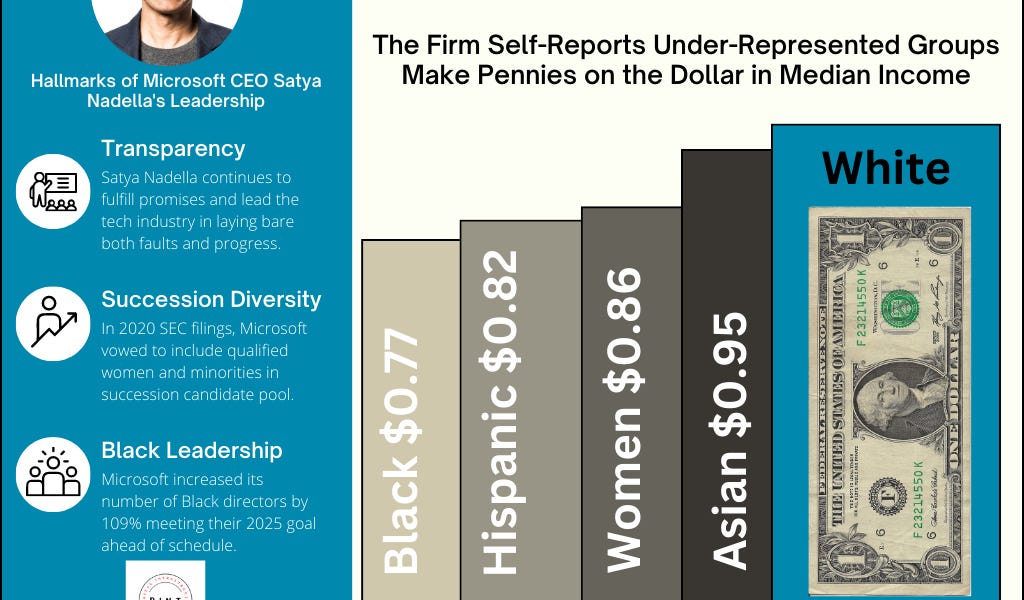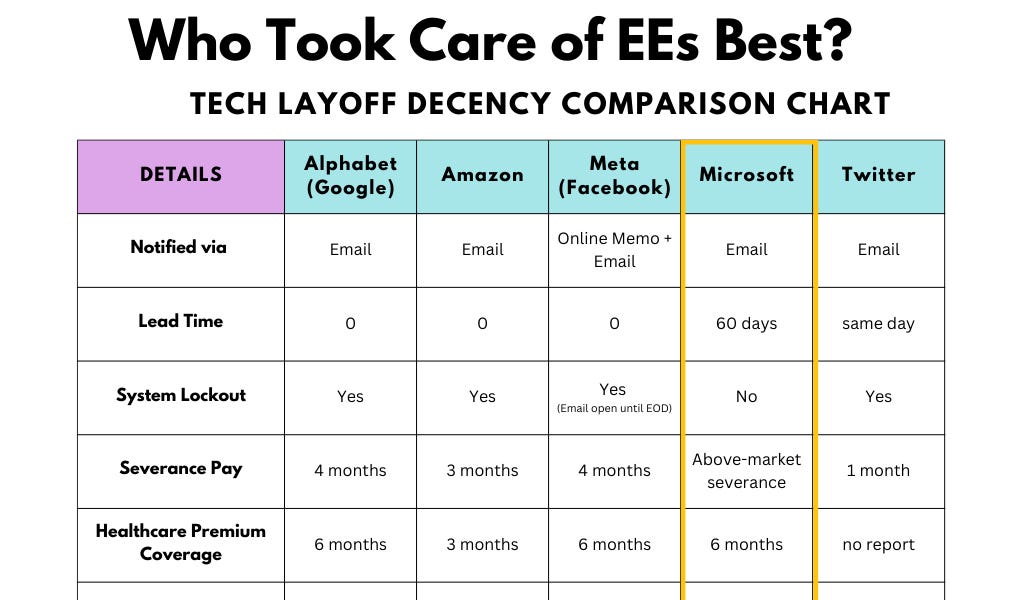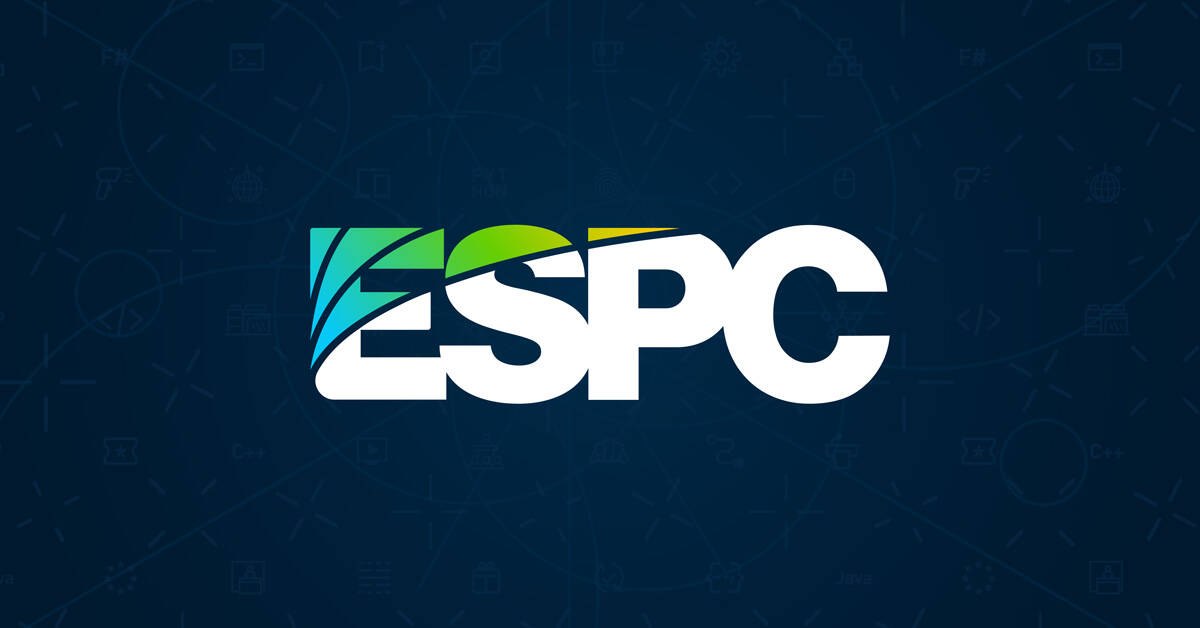- DINT
- Posts
- DINT 83 - It's Finally Here! Microsoft's 2023 Diversity Report Shares Highs and Lows of Its DEI Journey - Sans Core Data
DINT 83 - It's Finally Here! Microsoft's 2023 Diversity Report Shares Highs and Lows of Its DEI Journey - Sans Core Data
PLUS: Sarah Bond takes the top spot at Xbox. What does this say about the future of women of color in gaming?

Microsoft released its annual diversity report a bit later than it did last year. It wasn’t worth the wait. Two things stood out for us here at DINT:
There’s no raw data to show breakdowns of unadjusted pay data among races and genders this year. We only have Microsoft’s interpretation of the data and not the raw data set as Microsoft shared last year. 😡
Black leadership at the firm has declined, remained flat, or made small gains in comparison to numbers from other underrepresented groups in tech. 🤷♀️
While we’re usually a big fan of Microsoft, these two items give us pause. We’ve reached out to Microsoft to provide their side of the story. But even the data they have shared is quite damaging to their image as leaders in Big Tech for diversity, equity, and inclusion.
On a brigher note, Sarah Bond is now CEO of Microsoft’s Xbox. While her appointment doesn’t make up for the dismal growth numbers among Black employees at Microsoft, it does indicate the firm is willing to make big, representative moves to further diversity among its ranks.
Gaming is notorious for its rejection of women and people of color. It will be interesting to see how Bond navigates this landscape as the top leader of one of the world’s most successful gaming brands.
Lisa D. Sparks
Today’s Top 5 News Stories in Tech, Race, and Gender
Friday Feature
What’s in store for Sarah Bond as CEO of Xbox?
This is big news at the intersection of tech, race, and gender. Long-time gaming exec Sarah Bond now takes the helm at one of the largest gaming companies in the world, Xbox.
While Bond is down-to-earth, unassuming and engaging, she also had the determination and drive to carve out a place of leadership for herself in an industry with few Black people and even fewer women in positions of decision-making power.
Activision, also, isn’t known for its friendliness to women in the workplace. Here’s a link to our previous coverage on this topic: Activison Gender Bias.
We’ve put together a compendium of Bond’s accomplishments in hopes of deciphering her path to success. As we know, corporate life isn’t rosy for Black and Brown women. The fact that Bond now sits in a seat of power at Xbox speaks volumes about Microsoft, its culture and its willingness to give the underrepresented a chance to truly shine.
Could Bond’s hiring be a sign of Microsoft’s focus on more Black, female representation in executive leadership?
Yesterday, Microsoft released its Global Diversity & Inclusion Report 2023. Progress for Black and African American tech workers at Microsoft was either stagnant or negative according to the company’s self-reported results.
We reached out to Microsoft about these findings and have yet to hear back as of the time of publication. We will share their responses if and when we receive them.
Here’s what we asked:
We noticed the raw numbers (full data set) for median unadjusted pay weren't included in this year's report, as they were in the Microsoft Global Diversity & Inclusion Report 2022. Why is that?
Note: We asked this question because of Microsoft’s extreme transparency last year. Here’s a link to our coverage of their 2022 unadjusted median pay data:
Representation of Black and African American people in key leadership roles has declined, remained even, or experienced minimal growth in comparison to historical numbers. What factors contributed to this change?
Example: Partner + Executive 4.0% in 2022 and 3.8% in 2023Growth among leadership in other ethnic groups has increased or remained even, with no decline. What's caused this?

Across all employment sectors at Microsoft, Black professional leadership either increased by only 0.1%, remained stagnant, or declined. What's contributed to this downward trend?
From page 24 of the report: The number of People Managers (below Director level) decreased to 93.0% of our 2025 commitment, down from 116.0% in 2022. What contributed to this decline? What are the ways will Microsoft meet its 2025 commitment in this area? Does the firm foresee a downturn in the numbers of directors, partners, and executives in the coming years? If so, why?
From page 26 of the report: For Black and African American employees, exits representation of 8.7% was 2.0 percentage points greater than headcount representation of 6.7%. What contributed to this increase in exits of Black and African American employees? Does this mean more Black and African American employees were affected by the H1 2023 layoffs than any other group? If so, why?
Why did the rate of new hires of Black and African American employees decrease by 0.9%, while hiring among all other underrepresented ethnic groups (with the exception of Native Hawaiian and Pacific Islanders) either grew or remained even?
We also asked, “What effect have Microsoft's layoffs in H1 2023 had on the growth stagnation of leadership among Black and Hispanic tech professionals at Microsoft?”
We praised Microsoft in our previous coverage for treating its employees with respect and transparency during the H1 tech layoffs. Now it appears that praise was premature.
🥹 We’re optimistic we’ll get answers from Microsoft, but the data as its presented in their report points to a troubling picture. Microsoft laid off more than 10,000 of its employees in the first half of 2023.
Bottom Line: The data above appears to show Black and African American employees took the biggest hit in terms of growth numbers and leadership positions in the firm.


:format(url)/cloudfront-us-east-1.images.arcpublishing.com/baltimorebanner/23TGMYHHAZH6TOHR3YK2RDFY64.png)






Reply